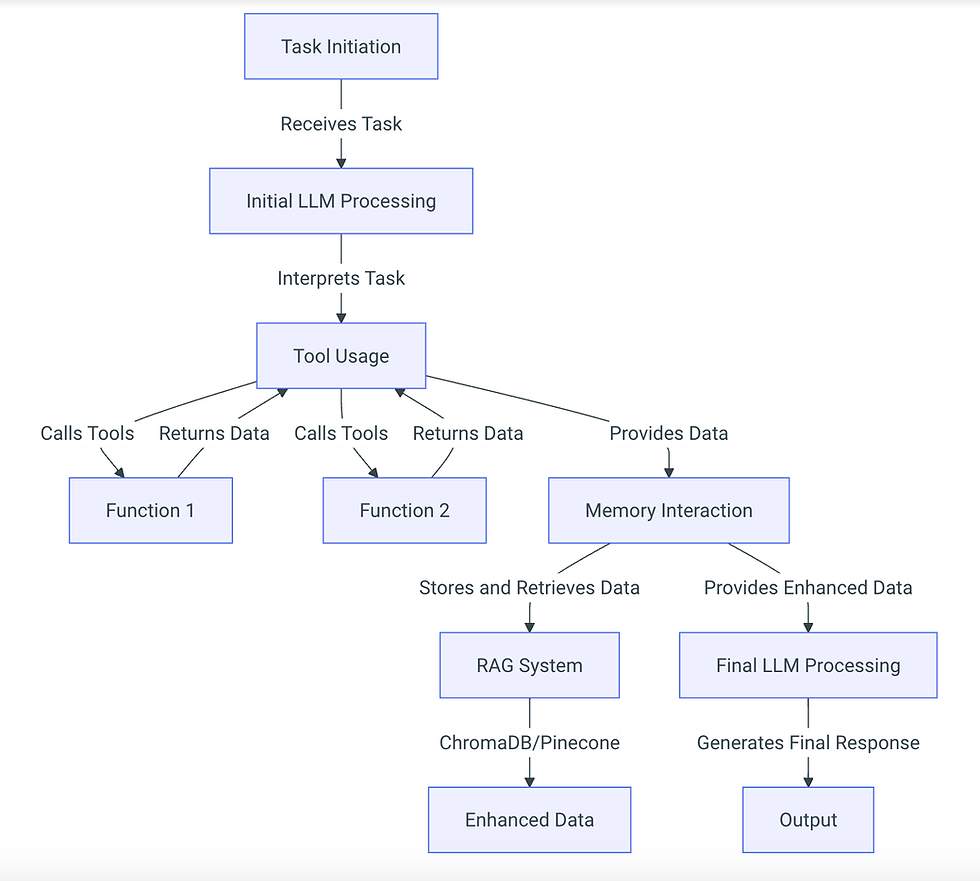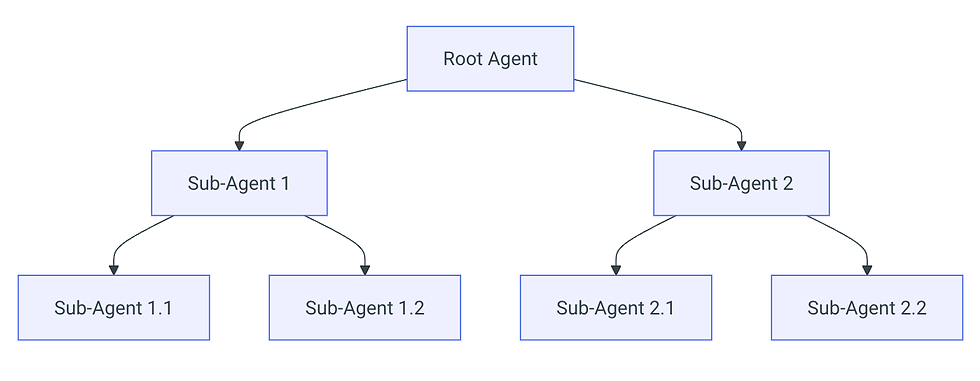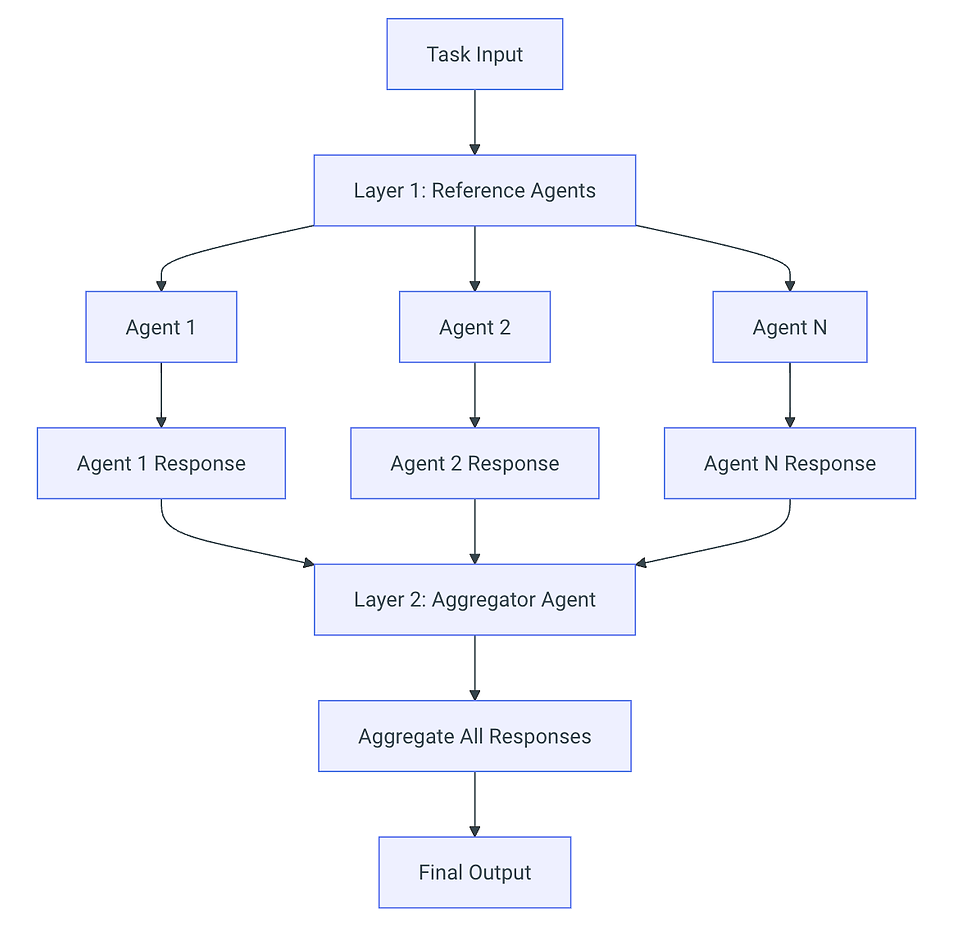Understanding Swarms: A Collaborative Agentic Framework for AI
- SquareShift Engineering Team

- Oct 7, 2024
- 3 min read
In our previous article, "Unlocking the Power of Agentic Frameworks," the SquareShift Engineering Team introduced frameworks like CrewAI, LangGraph, Swarms, LlamaIndex, and AutoGen, which enable autonomous AI agents to make decisions and solve problems. Among them, Swarms stands out by using collective intelligence, inspired by ant colonies, to allow multiple agents to collaborate without central control. This decentralized approach enhances real-time coordination, decision-making, and adaptability, making Swarms ideal for complex, scalable tasks requiring flexibility and efficiency.
What is Swarms?
Swarms is an agentic framework that allows for the coordination of multiple AI agents. These agents can be LLMs or other specialized agents designed for specific tasks. The framework focuses on enabling these agents to communicate, collaborate, and utilize shared resources to achieve common goals. Swarms aims to simplify the integration of various components such as models, prompts, and tools, making it easier to build sophisticated AI systems.
Key Features of Swarms
Modular Architecture: Swarms is built with a modular design, allowing developers to plug and play different agents, tools, and memory systems as needed.
Scalability: The framework is designed to handle a growing number of agents without compromising performance.
Tool Integration: Agents can utilize external tools and services to perform specific functions, enhancing their capabilities.
Long-term Memory: Integration with memory systems like ChromaDB and Pinecone enables agents to store and retrieve information over extended periods.
Collaboration: Agents can work together, sharing information and coordinating actions to solve complex tasks.
The Agent Workflow in Swarms
An agent in the Swarms framework operates autonomously through a sequence of stages:

Stage 1: Task Initiation
Input: A task or query that needs to be addressed.
Objective: Understand the task and prepare an initial approach.
Stage 2: Initial LLM Processing
Process: The LLM interprets the task, understanding context and requirements.
Output: An initial response or action plan.
Stage 3: Tool Usage
Process: The agent calls upon external tools or functions to gather information or perform actions.
Function Calling: Tools are accessed as functions with specific inputs and outputs.
Output: Data or results obtained from the tools.
Stage 4: Memory Interaction
Process: The agent interacts with long-term memory systems to store new information and retrieve relevant past data.
Memory Systems: Utilizes systems like ChromaDB or Pinecone.
Output: Enhanced context and data for final processing.
Stage 5: Final LLM Processing
Process: The LLM generates the final response using the enriched data and context.
Output: The comprehensive answer or action taken by the agent.
Multi-Agent Architectures Implemented Using Swarms
Swarms enables the creation of various multi-agent architectures, including:
Collaborative Problem Solving: Multiple agents work together to break down and solve complex problems.
Specialized Agents: Agents with specific expertise (e.g., data analysis, language translation) collaborate to accomplish a task.
Hierarchical Structures: Agents are organized in hierarchies where higher-level agents coordinate lower-level agents.
Distributed Systems: Agents operate in parallel, sharing information as needed to improve efficiency.
Here’s a breakdown of common multi-agent architectures within the Swarms framework:
Hierarchical Swarms:
Agents are organized in a hierarchy, with higher-level agents coordinating lower-level agents.

Parallel Swarms:
Parallel Swarm architecture, multiple agents operate independently and simultaneously on different tasks. Each agent works on its own task without dependencies on the others

Sequential Swarm:
A Sequential Swarm architecture processes tasks in a linear sequence. Each agent completes its task before passing the result to the next agent in the chain. This architecture ensures orderly processing and is useful when tasks have dependencies.

Mixture of Agents:

Example Architecture: Collaborative Research Assistant
Imagine a scenario where a team of agents acts as a research assistant:
Task Assignment: The main agent receives a broad research question.
Delegation: It delegates sub-tasks to specialized agents (e.g., data collection, summarization, fact-checking).
Tool Utilization: Each agent uses tools like web scrapers or databases to gather information.
Memory Storage: Findings are stored in a shared memory system for future reference.
Collaboration: Agents share insights to refine the research.
Finalization: The main agent compiles the information into a comprehensive report.
Conclusion
Swarms marks a promising advancement in multi-agent architecture, enabling seamless coordination of specialized agents across frameworks like Langchain and Autogen. With its modular, scalable design, Swarms is ideal for complex tasks in industries like manufacturing and healthcare. However, as the framework is still in its early development stage, we’ll need to wait for it to stabilize and become bug-free before it’s fully ready for widespread use.



Comments